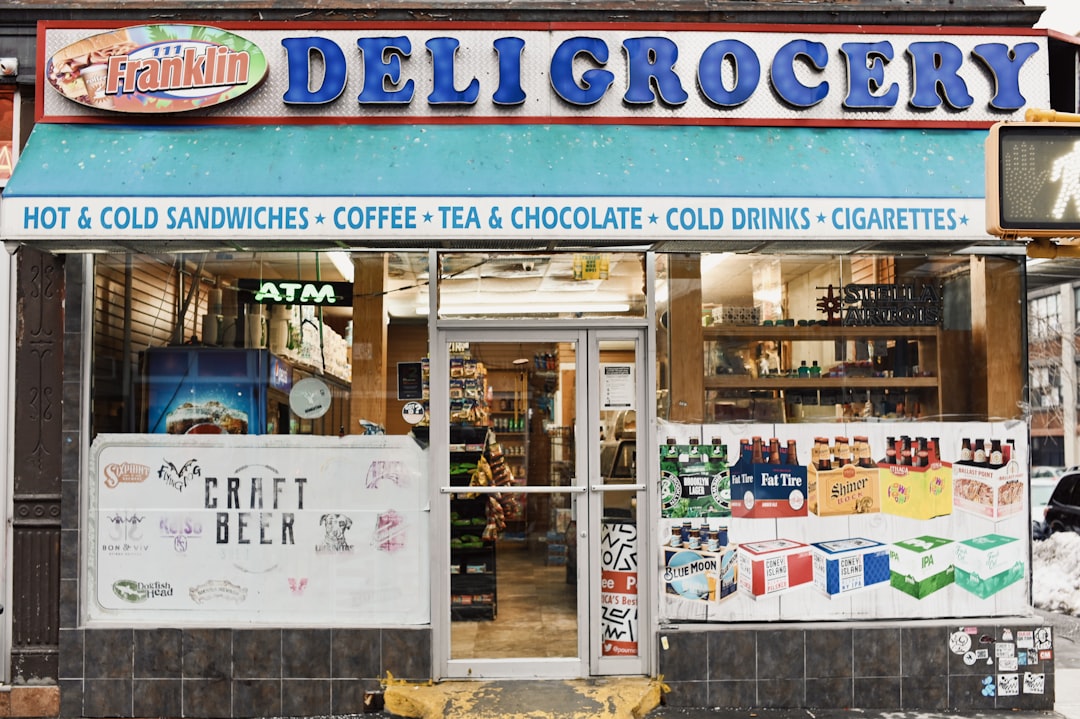Startup Cities Goodreads: March 2022
3D Printing Rivalry, Zaha Hadid Metaverse City, Megaproject Phobia, RIP Christopher Alexander, Backyard Bodegas, and Laotian Free Zone Gangsters with Go Carts
You’re reading Startup Cities, a newsletter about startups that build neighborhoods and cities.
This week: a Goodreads roundup for March 2022!
This is probably the weirdest and most eclectic roundup I’ve done. Skip around till you find something interesting.
Topics:
Golden Triangle Gangsters and My Visit to Shangri-La With Landmines
India vs. Texas 3D Printed Housing Rivalry
Naughty NIMBYs Resist Mandatory Upzoning
Paradigm Leads 15m Boost to Praxis
Thrillest Magazine discovers urban economics, is shocked
Blockchain-ing Land and Weather Data
Documentary on Bitcoin Volcano City Thing
SEZs as a Post-COVID Development Strategy
Why Move to a Crypto Co-op?
MEGALOPHOBIA strikes again!
Micronations in Belize
Give me Backyard Bodegas… or Give Me Frontyard Bodegas!
California Should Build New Cities. But Only If Those Cities Agree With My Ideology
Davis Clute on Cities for Refugees
Liberland’s Starchitect Metaverse City
Sprawl is Still the Future
RIP Christopher Alexander
The Mighty Doge of St. Mark’s Republic
A History of Crypto Secessionists
Zambia.eth
State of Software: LLC Edition
Companies Throwing Sand in Utah’s Regulatory Sandbox
Golden Triangle Gangsters and My Visit to “Shangri-La With Landmines”

March seems to have been the month of Zhao Wei with Investment Monitor (shout out to newsletter reader Thibault Serlet!) and Palladium Magazine both publishing great pieces on the infamous Chinese gangster.
Wei runs a corrupt special economic zone in Laos. The sketchy zone is almost too-perfectly named: The Golden Triangle.
Wei is a classic frontier character. Hardscrabble childhood. Mysterious rise to wealth and power. Part swashbuckling capitalist hero and part creepy underworld villain, critics — including the US Department of the Treasury — claim Wei traffics endangered animals, drugs, and people from the Golden Triangle.
Wei feuds with the Laotian pirates that run no-mans-land hideaway towns nearby. The pirates have been known to murder and rob their way up the river. Yet despite its dark reputation, the Golden Triangle seems only to expand.
Wei has plans for an airport and a seaport. He already runs casinos, hotels, and other amusements. If you look up Wei’s casinos on Google Maps, they’re listed as a “Government Economic Program”:
Go and watch this bizarre, high-production value drone video of Wei’s go cart track. And then remember that you’re watching an advertisement for the criminal underworld.
The Golden Triangle is a perfect example of why it’s a mistake to reflexively say, “Just make it a special economic zone!” SEZs reflect their surrounding institutional context, which is why Paul Romer (controversially) argued for a foreign nation to guarantee the institutional reforms of Charter Cities. He was worried that local elites like Wei (or conniving foreign elites) would use a zone’s autonomy to exploit the surrounding nation.
The story of Wei and his zone should get the Liam Neeson movie it deserves.
The Golden Triangle also takes me back to a bizarre experience I had while running Startup Cities Institute years ago.
One day I received an email from a friendly American who I’ll call Bob. Bob was the “economic advisor” to a guerrilla general in Burma’s disputed Karen region. This general, named Nir, wanted advice on how to develop his territory.
I had a Skype call with Bob and Nir, though the good general had connectivity issues and I never saw his face.
Bob matter of factly explained the situation. The Karen guerrillas were in trouble. They had no ammunition. So they often waited for the enemy to sleep, killed them with their bare hands, and stole their supplies.
I think I was visibly uncomfortable during the conversation and Bob, hoping to smooth things over, said: not to worry, Karen is beautiful! He deadpan described it as “Shangri-La… but with landmines.”
I found my old notes from this conversation. Phrases like “MAELSTROM OF VIOLENCE AND STRIFE” are circled. I like to consider myself open to adventure. But driving a jeep through a dense jungle full of landmines and murderous, starving guerrillas seemed a bit much for me.
But not for Bob.
He emailed me a year later with drone footage and a pitch deck raising money for an ecolodge he was building in the area.
3D Printing Rivalry: India vs. Texas
In partnership with the Indian Army, 3D printing startup Tvasta printed 2 new houses. The houses, built in about 30 days, will hold members of the military. Not to be outdone, ICON partnered with the Texas Military (did you know that Texas had its own military department?) to 3D print a new barracks.
During SXSW, ICON also unveiled “House Zero,” (pictured above) a “mid-century modernist ranch house” with “energy-efficient design for sustainable living.”
Predictably, critics knocked the unique design and are certain House Zero will suffer from insulation and other problems. There’s no doubt that House Zero looks different. But I’d be excited for a tour!
Naughty NIMBYs Resist Upzoning with Mountain Lions
Some state legislatures, including California’s, want to reform zoning laws from the top down. But NIMBY strongholds won’t have any of it, reports Planetizen. NIMBYs across the country have resorted to cynical ploys to avoid new housing.
For example, the town of Woodside, California proposed that the entire town be declared protected habitat for mountain lions. Even without formal declarations, local NIMBYs have weaponized the well-intentioned environmental review process to block development. Elsewhere, NIMBYs block state-mandated upzoning with the usual charges of gentrification and “historical preservation.” It’ll be interesting to see how the showdown ends.
Paradigm Boosts Praxis
Crypto fund Paradigm has led a $15 million Series A for Praxis (formerly Bluebook Cities).
Praxis reports a focus on their next stage of city-building:
In pursuit of our community’s new home, we are actively engaging with landowners and governments, designing economic and political systems, architecting buildings and infrastructure, and bringing together the people who will inhabit them.
Thrillest is Shocked to Discover Urban Economics
In a listicle titled, “Unintended Benefits of Houston Being America's Worst-Designed City”, Thrillest claims that Houston’s failure to top-down control everything about its evolution maybe, just maybe, might have had some unintended benefits.
“The plan is there is no plan,” charges the author. But benefits of such a lack-of-plan include resilience during the financial crisis, multiple downtowns, quirky architecture, mixed uses, and rapid growth.
Blockchain-ing the Land … and Weather!
CityDAO has found the frontier again. In partnership with IoT company IoTeX, they’re deploying sensors on Parcel 0 — their DAO-sourced real estate in Wyoming.
Sensors report back “air pressure, light intensity, air quality, humidity, and climate temperature.” This data, verified and on-chain, will be available to DAO members, who can decide what to do with it.
El Salvador’s Bitcoin City Gets a Documentary
Construction-focused YouTube channel Tomorrow’s Build published a documentary on Nayib Bukele’s volcano-powered Bitcoin city. I wouldn’t describe it as an optimistic documentary, but it captures many parts of a complicated situation.
Sorry Bitcoiners, but my current view is that this city will never be built and most money raised will end up in the pockets of cronies. Bukele, prove me wrong!
SEZs as a Post-COVID Development Strategy
A new paper in an obscure Russian entrepreneurship journal promotes Special Economic Zones as a tool to fight COVID’s economic doldrums. The paper is pretty standard, wonky SEZ stuff. One interesting bit is that several of Russia’s COVID-19 vaccines were developed inside zones.
Here’s an English Google-translation of the original paper:
Why Move to a Crypto Co-op?
Substacker Dr. Gondola muses on his own struggles to find a city and the promise of “crypto-cities” (his term) like Montanoso and Praxis. Gondola talks about the usual problems of American cities: NIMBYism, high prices, crime.
But he also writes of isolation inherent to remote work. I’ve felt the same way the last few years. One motivation of this newsletter was to connect — even if just digitally — with more interesting people.
Gondola’s piece is most compelling as a glimpse into the mindset of a particular type of customer: geographically mobile, skilled, middle+ class soon-to-be-families whose work ties them to nowhere.
MEGALOPHOBIA strikes again!
The always-excellent Jason Barr offers a new piece in Dezeen on our modern fear of big projects. Barr faced plenty of skepticism with his compelling pitch to extend the island of Manhattan (pictured above). “We have developed a deep-seated phobia about large-scale projects,” he argues.
I find myself reflexively agreeing with almost everything Barr writes, but I paused when I read this piece. On the one hand, big construction projects (and even small construction projects!) are ruthlessly blocked and criticized. This speaks to the phobia.
On the other hand, has there ever been a time when people have demanded the government to solve more complicated problems? Health. Safety. Employment. Climate change. Homelessness. International peace. Happiness. It almost seems as though the American phobia of big projects only includes big physical things. There’s no shortage of demands for massive interventions into complex economic and social systems.
Barr also argues that “large-scale problems require large-scale solutions.” Sometimes this is surely true. But big changes can also happen via incrementalism compounded for a long time.
Anyone who’s worked in a successful startup has seen this. A great company is rarely built on a single home-run. Often it’s many small optimizations and tactics compounded over lots of users or lots of time that deliver big change.
I think modern Americans do fear big construction projects. But Americans also underestimate the power of compounded incremental improvements. Does this contradict Barr’s thesis? Not at all. But it suggests this phobia may present itself in complex ways.
Give me Backyard Bodegas… or Give Me Frontyard Bodegas!

Scott Beyer returns with an excellent piece arguing for Accessory Commercial Units — the business version of the now-popular “Accessory Dwelling Unit.” ACUs are small businesses operated on a homeowner’s property.
ACUs are the default in many non-US cities. And they’re the lifeblood of informal communities abroad. ACUs make business ownership more accessible to people, since it’s much cheaper to add a little shaved ice shed to your house than it is to take out a commercial lease in a strip mall.
ACUs make neighborhoods lively. They encourage healthy experimentation. Despite their potential, ACUs face stringent opposition throughout the U.S. But let’s hope Beyer gets his way and I can soon buy a mixed drink from my neighbor’s garage!
Micronations in Belize

CNN reports that the “Let’s Buy an Island” crowdfunding project finally, well, bought an island. The uninhabited 1.2 acre island in Coffee Caye cost $250,000.
The founders hope to convert the island to a micronation not-so-creatively named “Islandia.” Micronations like these are mostly built tongue in cheek: governance-as-tourist-trap.
For curious travelers, Lonely Planet has a fun guide to such projects around the world.
California Should Build New Cities. But Only If Those Cities Agree With My Ideology
Current Affairs wants California to fight the housing crisis by building new cities. In a way, the article reads like a NIBMYism so radical it loops back around to the aggressive YIMBYism of a brand new city.
Upzoning or building more houses will cause “displacement” and change “neighborhood character,” says the author. So what if we built new cities instead?
The barriers are mostly ideological, he argues. The piece channels Jason Barr’s piece (referenced above) by arguing:
In the U.S., we have lost faith in megaprojects. We associate them with boondoggles like the Big Dig in Boston. Even building a high-speed rail network seems an impossible dream, even though there’s no reason it should be … To build whole cities? Unthinkable.
And what about existing proposals for new cities like Telosa?
Well, says the author, “these projects are almost certainly never going to happen, because most billionaires are full of shit” and “the resulting cities will be dystopian.” (Hat tip to the highly professional editor who thought this was good journalism!)
So how do we get cities that aren’t dystopian? We ask for “the state to take charge and build whole new cities.” After all, when have states done anything dystopian? 🤔
The most interesting aspect of this article is how it shows the weird ideological component of new cities. The “cities from scratch” space includes a big dose of radical libertarians and freedom-at-all-costs crypto advocates. But it also includes communitarians, traditionalists, avowed communists, and, now, Current Affairs radical progressives.
Over the years I’ve come to see “new cities” as vehicles for ideology. The dream of the blank slate means that advocates — of any ideology — can project their own worldview onto the city.
A Georgist builds the ideal Georgist city. The crypto dude builds the crypto city. The progressive builds the progressive city. Everyone gets what they want because cities, in the realm of pure theory, can be anything to anyone.
Davis Clute on Cities for Refugees
Entrepreneur (and reader of this newsletter) Davis Clute writes in favor of new cities for refugees. Clute makes a compelling, heartfelt case for the many positive benefits of immigration — even the tragic case of refugees who immigrate under duress. For those interested in the refugee angle, check out SDZ Alliance, Refugee Cities, and Cities of Light.
Liberland’s Starchitect Metaverse City
Liberland, a micronation in a disputed territory between Serbia and Croatia, has taken to the metaverse reports The New York Post and Surface Magazine. Liberland is “staking its claim in the virtual world” with a new virtual environment designed by Zaha Hadid.
The cyber-space is inspired by Patrik Schumacher’s parametricism, which uses algorithms to create building shapes. The Post (uncharitably) calls the plan a “utopian metaverse city that will have almost no rules or police.”
I’ve been into VR for years, both as a developer of small VR experiences and as a player/visitor to the early metaverse. I don’t believe that the path of “we’re all in VR together” to “we now live in a physical city together” is as clear cut as some proponents seem to think. But it’s absolutely true that meeting people in VR feels more intimate than Zoom or email.
So there’s no reason to doubt that a metaverse presence could be a great boon to online communities, including those that hope to build a physical community. And there’s no reason to stop the experiments!
I look forward to checking out the Liberland metaverse one day, if for no other reason than to bang a virtual gavel in this big cyber-U.N. room:
Sprawl is Still the Future

Judge Glock, the only economist who sounds like he could also be a grizzled 80’s action hero, writes a defense of sprawl for the Breakthrough Institute.
Glock argues that the costs of sprawl are not as high as they seem, that sprawl is a legitimate and real part of market demand, and that sprawl might even be an indicator of progress: urban residents are now able to escape the problems of dense city living.
Fun, contrarian stuff!
R.I.P. Christopher Alexander
Urbanism giant Christopher Alexander died in March. I had always dreamed of meeting him someday.
Alexander is an almost mythical figure. His work appears in the most unlikely of places. His books are massive, deep, and classics. He’s revered equally by many urbanists and computer programmers!
Here are two appreciations or Alexander’s work, one by an urbanist…




… and another by a software-ish person:
I still enjoy flipping through A Pattern Language and I’d argue that Notes on the Synthesis of Form should be read by any software engineer.
The Mighty Doge of St. Mark’s Republic
Charter Cities Atlas returns with a beautiful exhibit on the history of Venice. The remarks on the Doge (a sort of autocrat-mayor) are interesting, especially the note on how the Doge could not own land outside Venice.
The ancients understood incentive alignment.
A History of Crypto Secessionists
Isabelle Simpson writes a history of new city, micronation, and new currency projects in the crypto space. The history parallels the rollercoaster of the crypto space as lived by a straight-out-of-a-novel cast of characters. Simpson is clearly not a sympathetic author, but the piece is interesting.
Zambia.eth
Vitalik Buterin, a known supporter of new city projects, is throwing his name behind a new tech hub in Zambia. Bloomberg reports that leaders in Zambia want to diversify away from the country’s heavy reliance on copper exports. Zambia is already home to a prominent “charter city” project: Nkwashi.
Details are still thin on the new tech hub, but I suspect we’ll hear more soon given Mark Lutter’s departure from Charter Cities Institute earlier this year to lead a new city project…
State of Software: LLC Edition
I don’t believe that software is the most important element of new (or old) cities. But I did find this fun example of just how much room for improvement there is:


Companies Throwing Sand in Utah’s Regulatory Sandbox
The Salt Lake Tribune writes that not all is well in Utah’s much lauded regulatory sandbox. The sandbox is certainly an innovative policy: a pathway for innovative companies to sidestep onerous regulatory and legal requirements. But one person’s innovation is another person’s crony privilege.
Companies and government offices are now feuding over the benefits that certain companies enjoy in the sandbox, while their competitors are stuck in the old system.
The fight raises some legitimate questions about zones:
How fair is it to remove burdens from one company but not another?
What qualifies as an “innovation” worthy of the sandbox?
Nothing about these problems suggests that Utah should do away with the sandbox. But, as in the long history of free zones, these thorny details will continue to haunt it.
Thanks for reading and don’t forget: Startups Should Build Cities!











